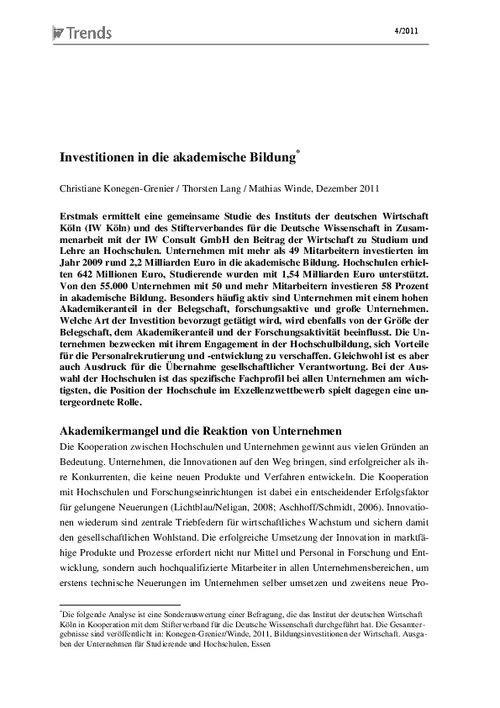In cooperation with the Stifterverband für die Deutsche Wissenschaft, an innovation agency of the German economy, the Cologne Institute for Economic Research (IW Köln) has estimated that medium-sized and large German companies in 2009 invested a total of 2.2 billion euro in tertiary education. While 642 million euro went directly to the universities, over 1.5 billion euro were dedicated to student support. The latter includes grants and scholarships, apprenticeship-programs which combine vocational training with tertiary education and internships. Particularly active in these programs are companies with more than 250 employees, firms with a high share of university graduates and research-intensive companies. The selection of the supported universities depends above all on the fields of study they offer, while their performance in the government “initiative for excellence“ plays only a minor role.
Download | PDF


